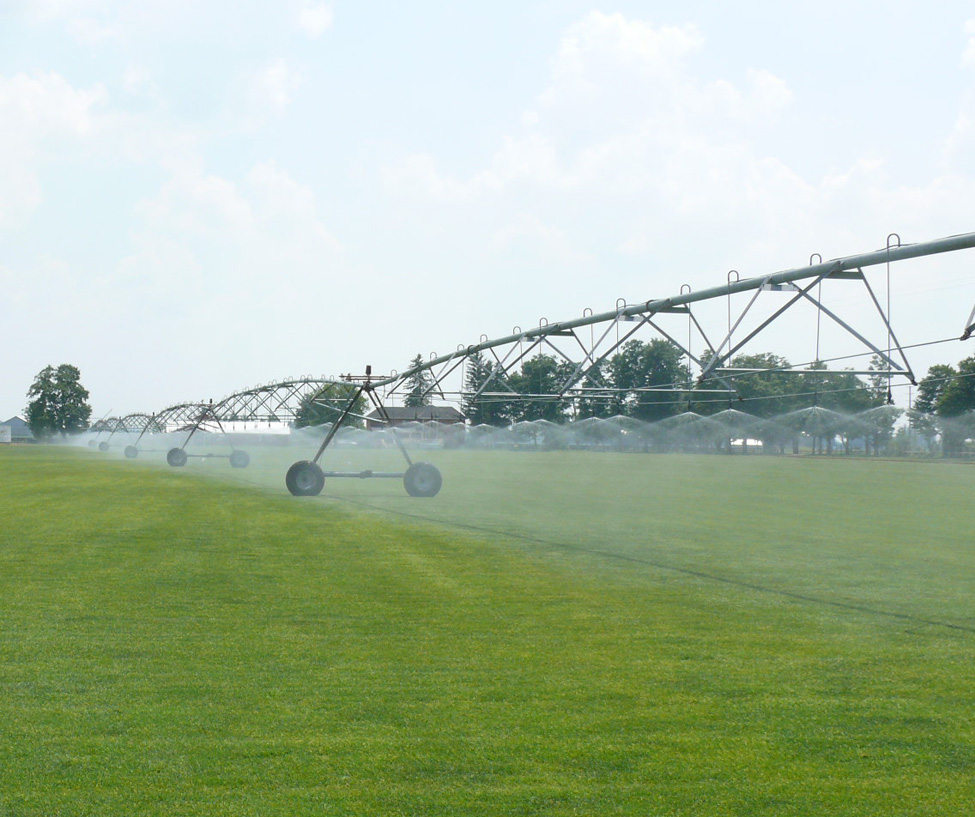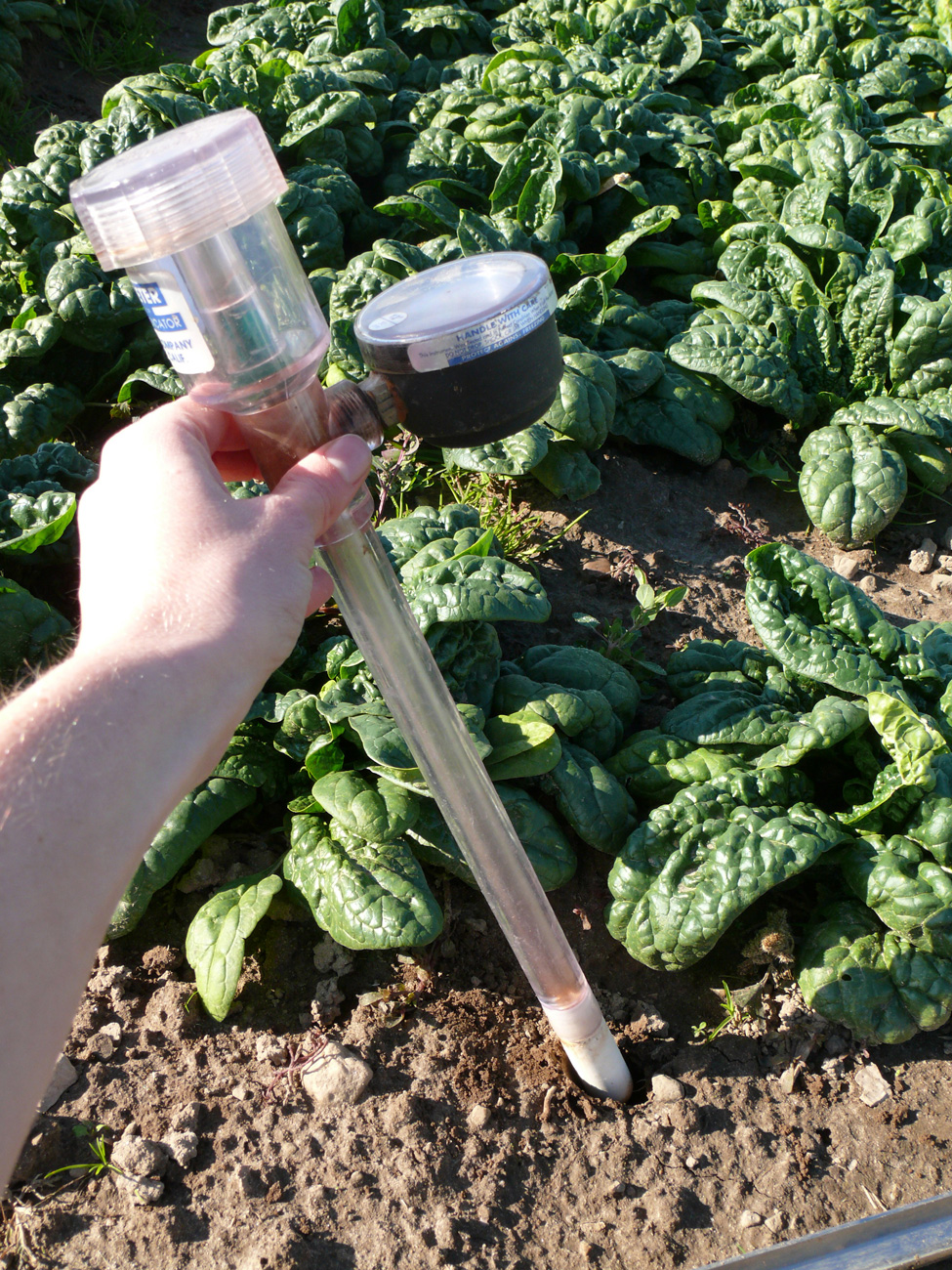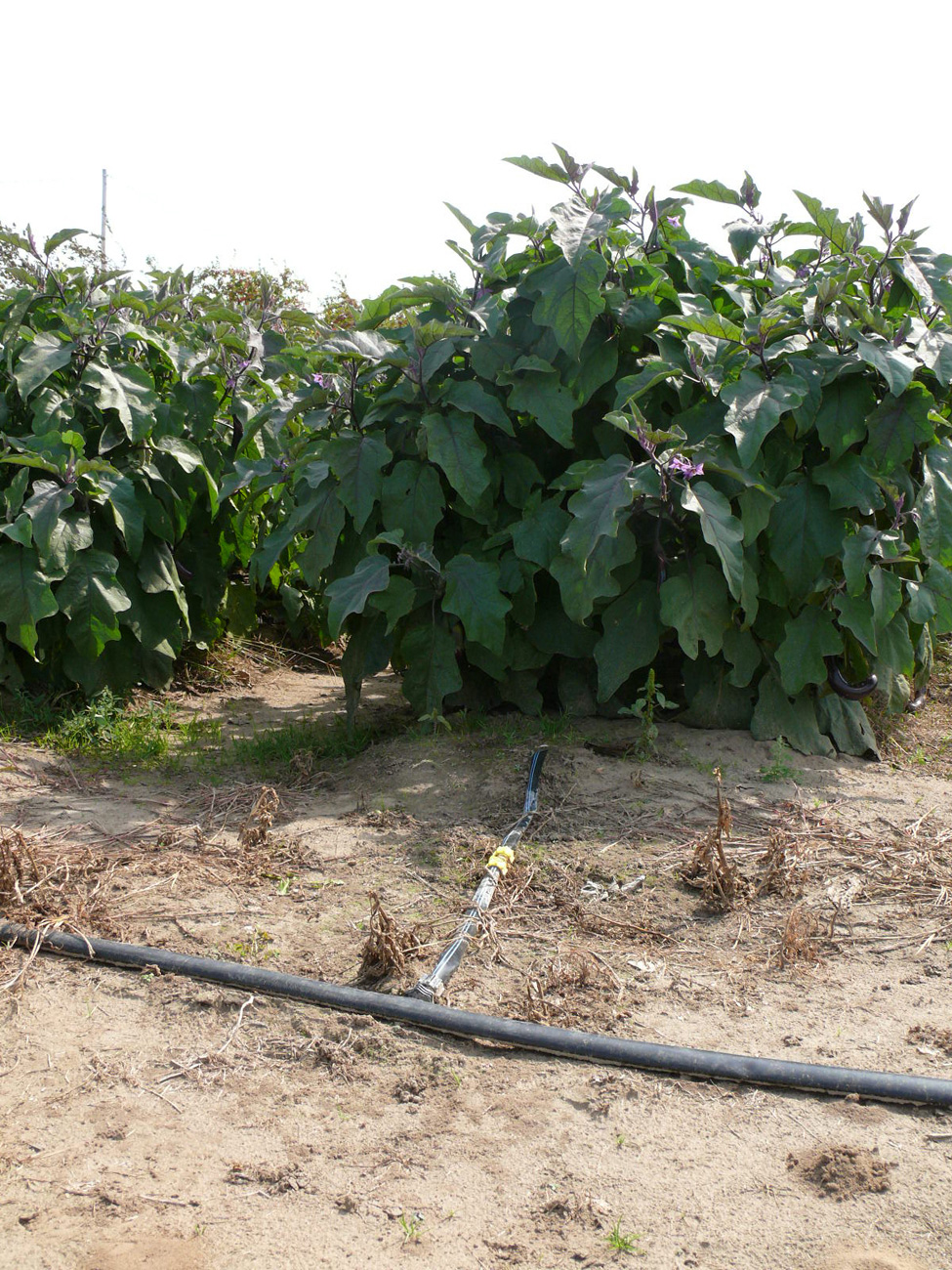Water efficiency and conservation practices for irrigation
Learn how to document irrigation water efficiency and conservation practices. This technical information is for commercial crop producers in Ontario.
ISSN 1198-712X, Published June 2025
Introduction
This fact sheet discusses recording irrigation water efficiency and conservation practices. It may help irrigators applying for a permit to take water or filling out the required Schedule for Water Conservation Measures (Schedule 1) as part of their permit application.
Documenting irrigation water efficiency allows irrigators to record water efficiency and conservation measures and practices currently underway or scheduled to be undertaken for the duration of the permit. It does not require a producer to introduce new practices.
For most agricultural irrigators, it is acceptable to omit stating a quantitative goal for reducing water use (such as litres per tonne produced).
In Section 2 of Schedule 1, for the 9 categories of water and conservation best management practices listed, there are 5 that pertain to agricultural water takings. Of these, there may be a few, many or no actions for implementation The selected actions describe the details of each practice and correspond to many of the practices on the application for Permit to Take Water.
Adopting these water efficiency and conservation practices can result in benefits for the farm operation and the environment:
- water use audit
- use of water-efficient fixtures, equipment and technology
- overall water conservation and efficiency program
- leak detection/loss prevention/control program
- public/employee information/education and outreach
- water-efficient production processes and practices
Water use audit
- Monitor water use which is a mandatory requirement for all holders of Permits to Take Water
- meter and log all water used, or
- calibrate, monitor and log water used
- Ensure water supply meets the needs of the operation in every year.
- Measure and log water application depth (mm) and evenness (for example, with a series of rain gauges in the field, at least once per growing season).
- Operate and monitor water system to ensure that irrigation water seldom ponds and does not result in surface runoff from the field.
- Operate water systems and monitor drainage system to ensure that drainage tile systems do not flow during or after irrigation sessions.
Water-efficient fixtures, equipment and technology
- Ensure the irrigation system applies water to the plant rooting area only (for example, drip system).
- Centre pivot or lateral move system with low pressure spray nozzles (or drop tubes) (Figure 1).
- Use a low-level sprinkler system.
- Use a travelling boom system with low-pressure spray nozzles.

Overall water conservation and efficiency program
- Schedule irrigation based on crop water needs for each stage of development from seedling to mature crop.
- Schedule irrigation according to rainfall. Monitor rainfall with a rain gauge.
- Schedule irrigation according to evapotranspiration (the transport of water into the atmosphere from surfaces, including soil (soil evaporation), and from vegetation (transpiration)). Monitor evapotranspiration from weather service or on-farm weather station.
- Incorporate soil moisture-holding limitations (assessed by laboratory tests for soil moisture-holding ability or texture analysis) for determining crop irrigation needs.
- Measure soil moisture by the hand-feel method.
- Measure soil moisture with a soil moisture gauge (Figure 2).
- Maintain and increase soil organic matter (as measured by a soil test):
- Strategically plan crop rotations, including forages if possible.
- Add organic matter.
- Leave residue on soil surface.
- Reduce number of tillage passes.
- Plant cover crops.
- Avoid and reduce soil compaction:
- Stay out of wet fields.
- Reduce axle weight and tire pressure.
- Implement crop rotations, including forages, if possible.
- Leave residue on soil surface.
- Plant cover crops.
- Be prepared for low water condition readiness.
- Have a written contingency plan in place to deal with periods of decreased water supply.
- Ontario Low Water Program
- Knowledge of and participation in the province’s Low Water Program.

Leak detection, loss prevention and control program
- Conduct regular maintenance checks for leaks and fix immediately.
- Check sprinkler nozzles yearly and replace if worn.
Public and employee information, education and outreach
- Attend a workshop or conference on improving irrigation efficiencies using best management practices.
- Attend an Environmental Farm Plan workshop to increase awareness and evaluate current water conservation and efficiency best management practices.
- Review the Ministry of Agriculture, Food and Agribusiness’ (OMAFA) Best Management Practices Books: Irrigation Management or Water Management.
- Review OMAFA’s fact sheets on agricultural irrigation.
Water-efficient production processes and practices
- Ensure the system is properly designed and sized for operation by a professional designer (Figure 3).
- Make sure irrigation never extends over non-cropped surfaces.
- Schedule irrigation during the night, early morning or on cloudy days for overhead irrigation.
- Use overhead irrigation when:
- irrigation is operated during wind speeds less than 5 km/hour
- irrigation is operated during wind speeds less than 10 km/hour
- Schedule irrigation around other constraints such as alternating taking times with neighbours who irrigate from a common source (such as a stream).

Summary
Adopting water efficiency and conservation practices can result in benefits both for the farm operation and the environment. Optimizing irrigation leads to improved profitability.
Author credits
This fact sheet was updated by Craig Fowler, P. Eng., engineer, water management, OMAFA and reviewed by Ali Alaawad, P. Eng., engineer, water quantity, OMAFA. It was originally written by Rebecca Shortt, P. Eng., water quality, OMAFA, Simcoe, Andrew Jamieson, AAFC, Tim Brook, P. Eng., water management, OMAFA and the MECP-OFA-OFVGA-OMAFA Working Group.